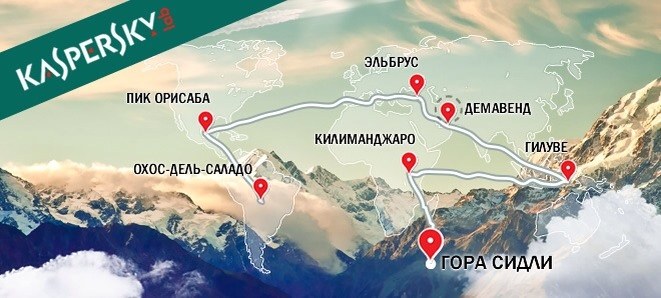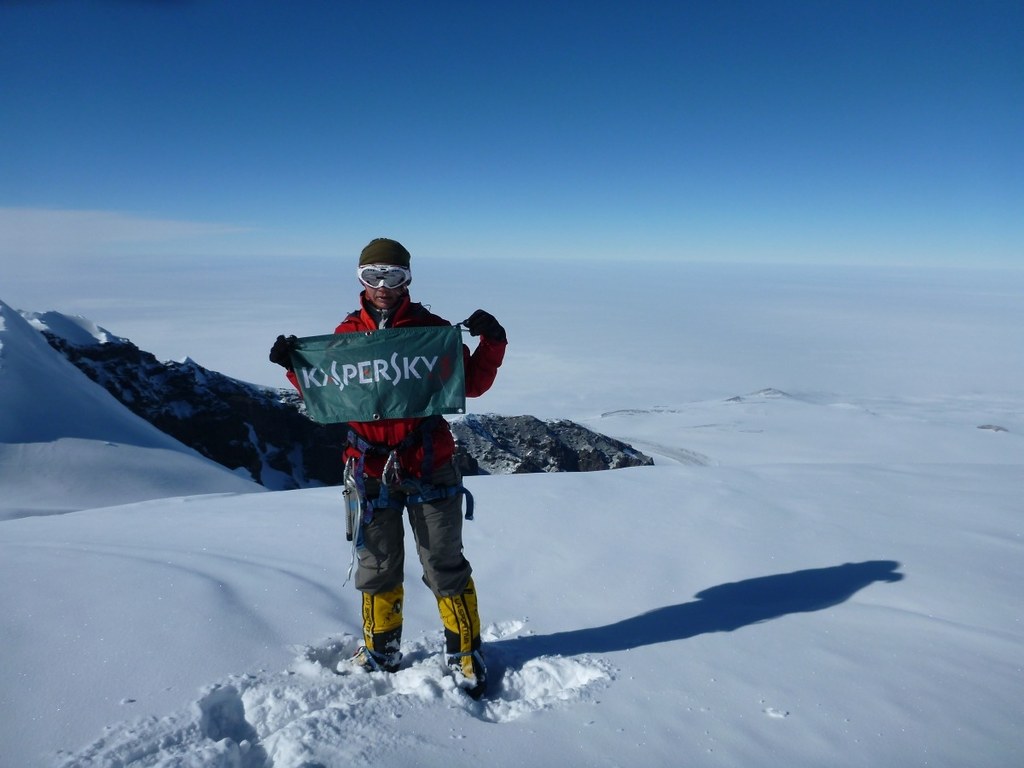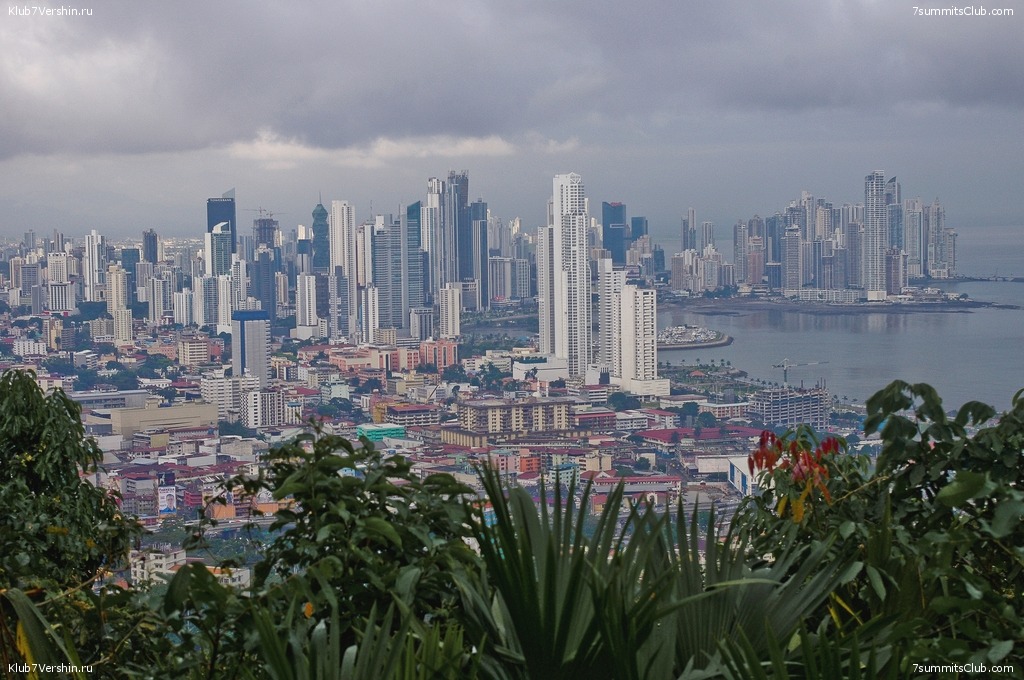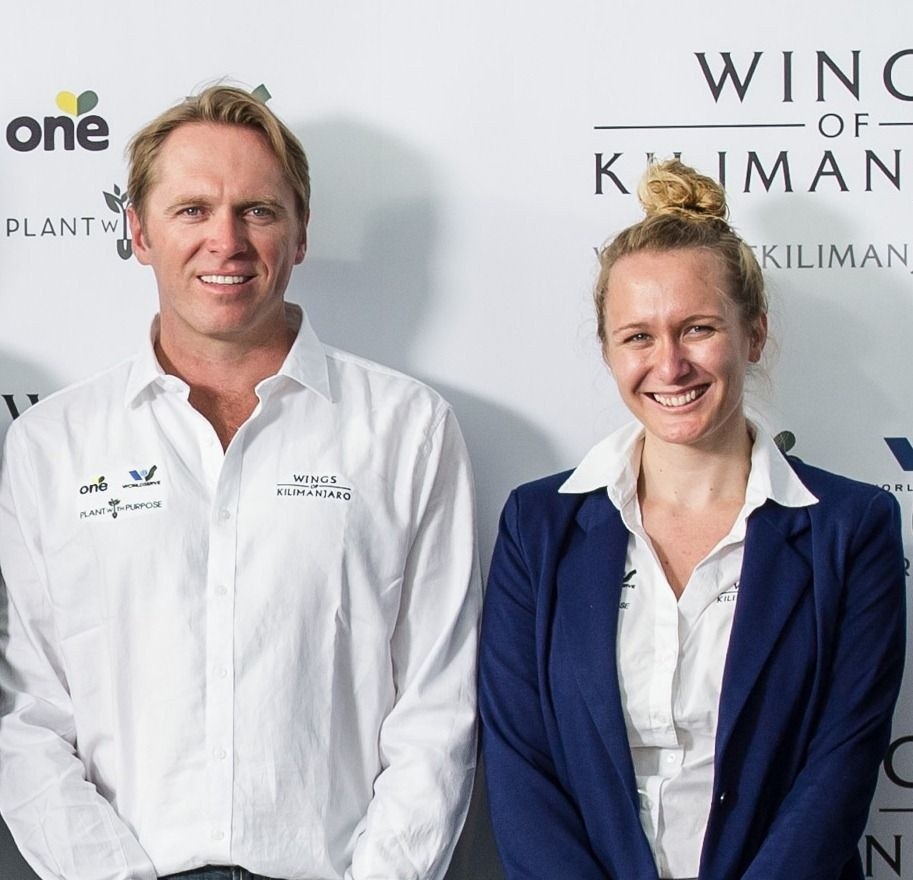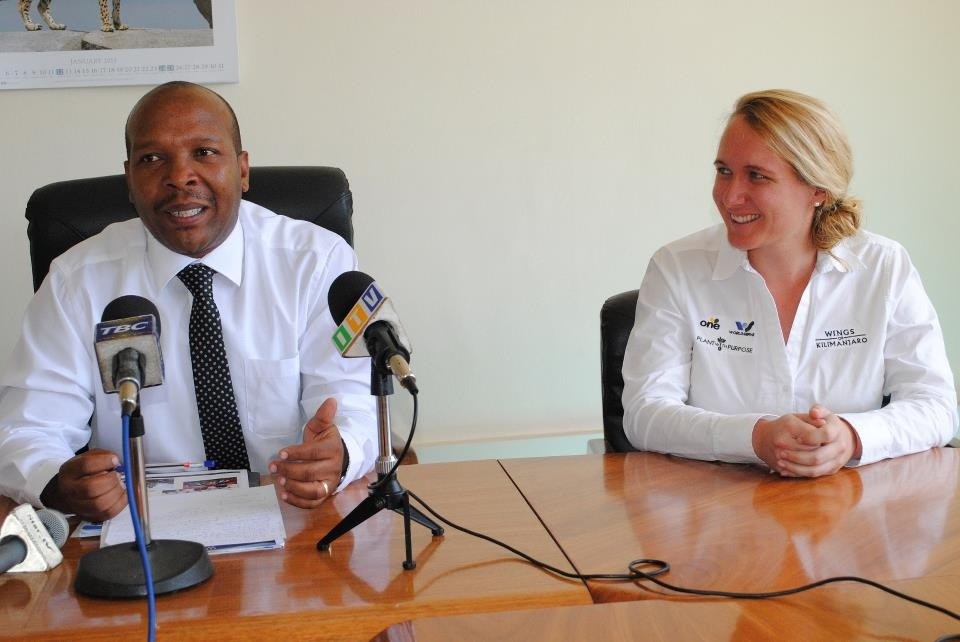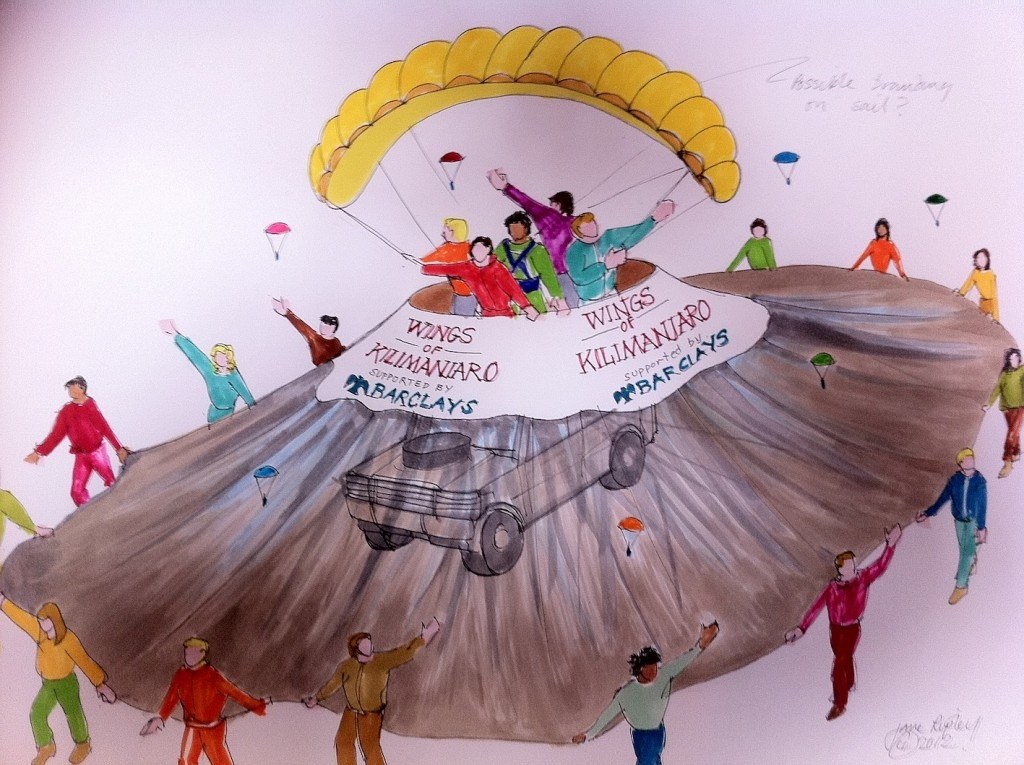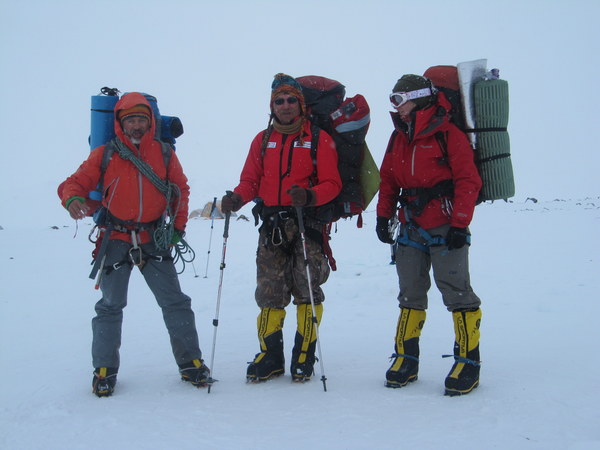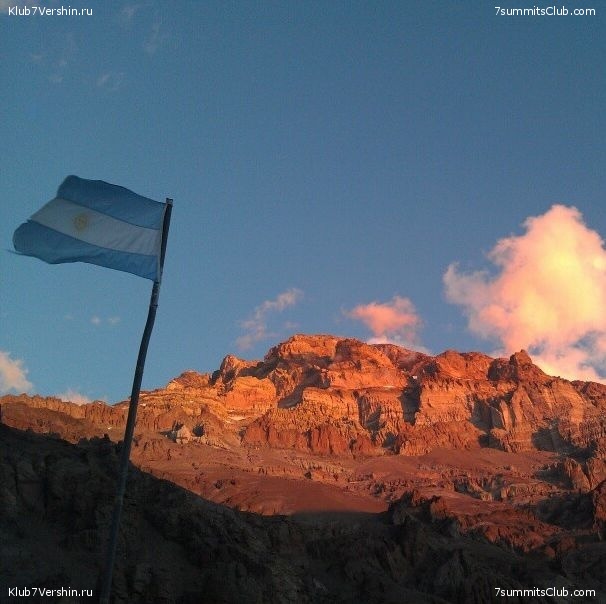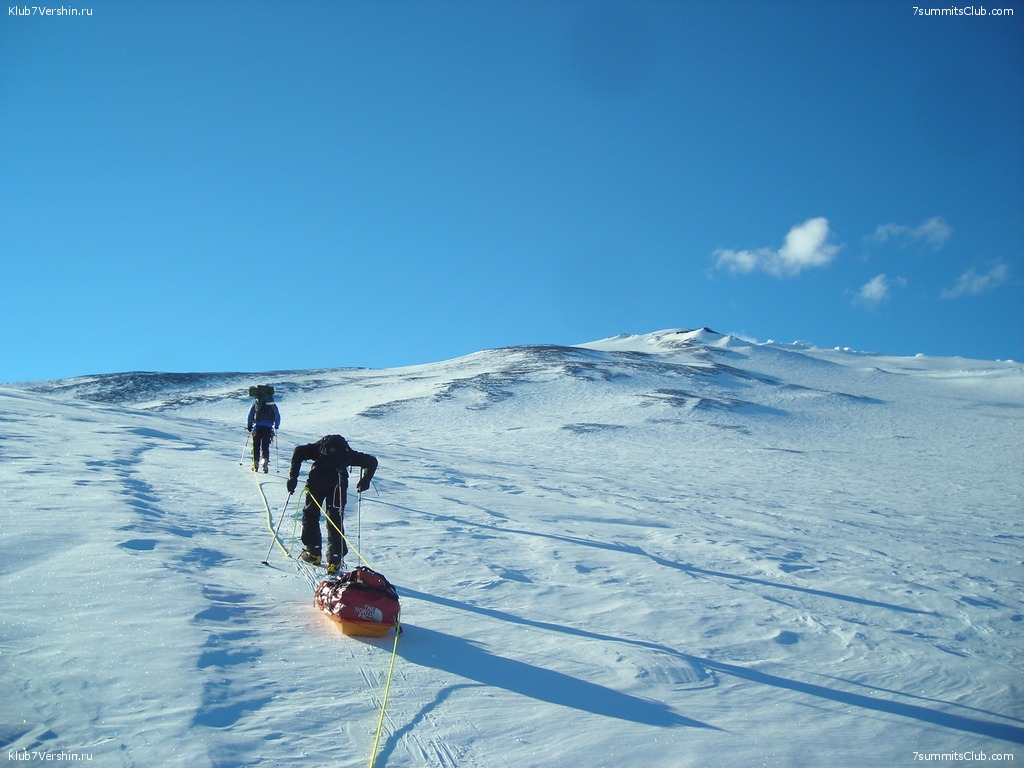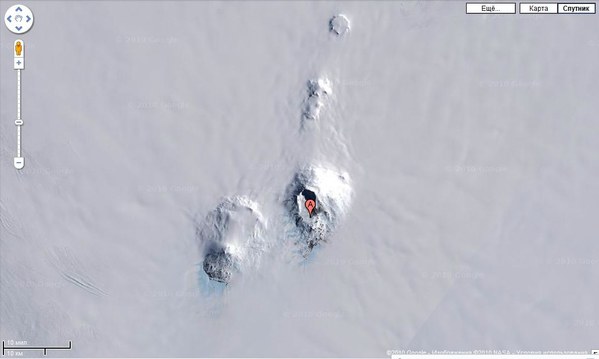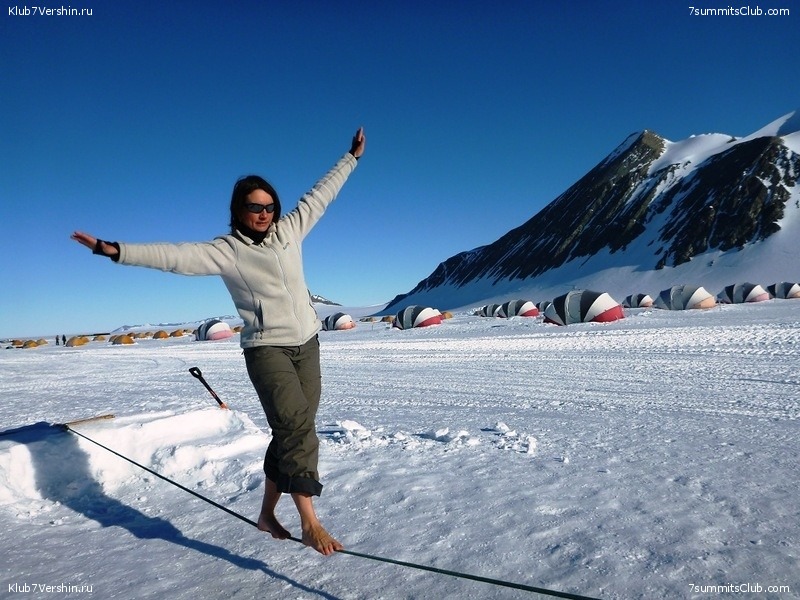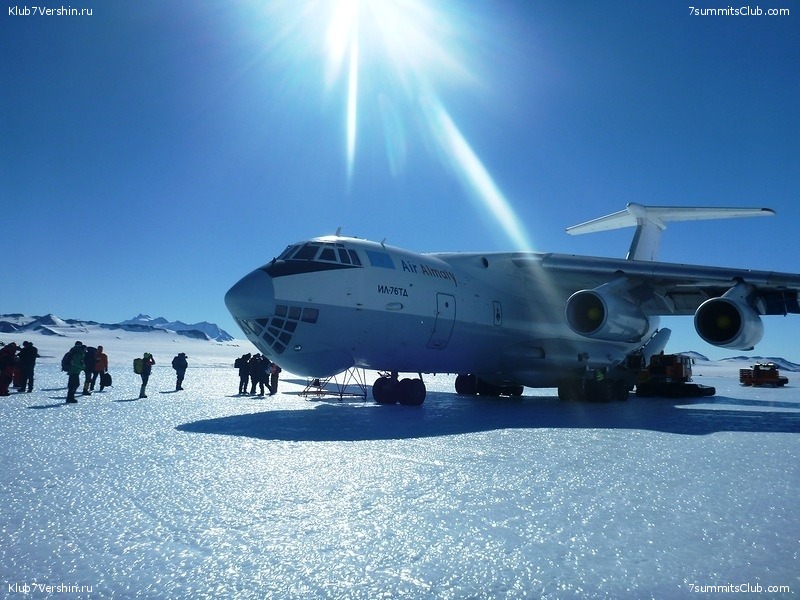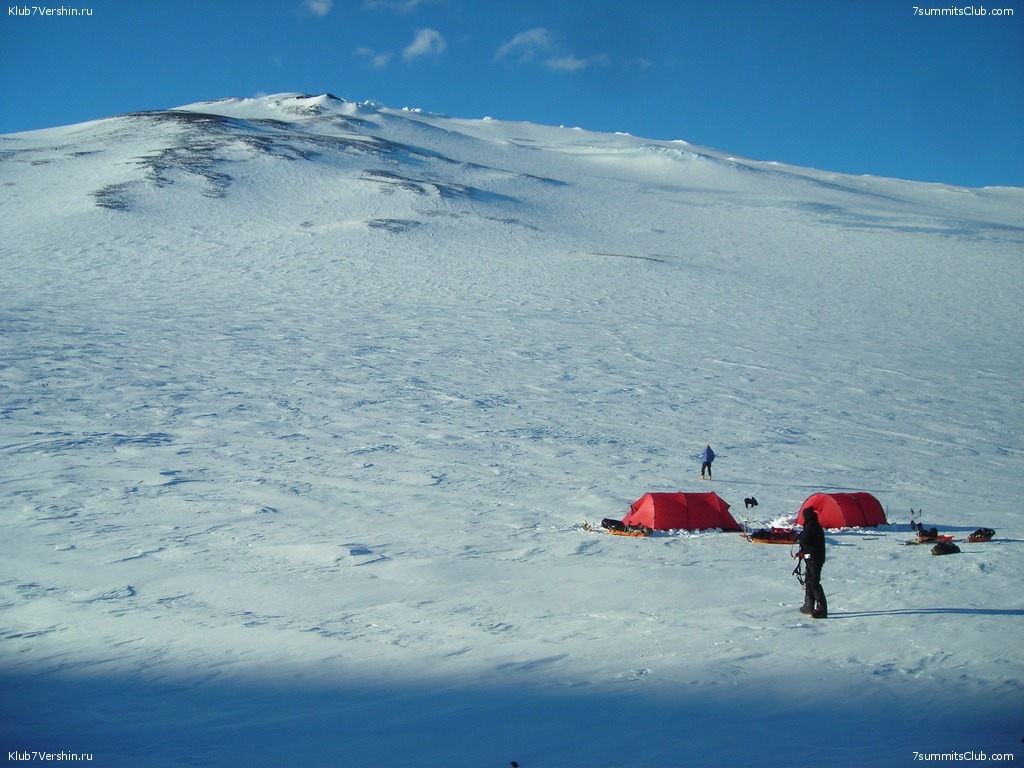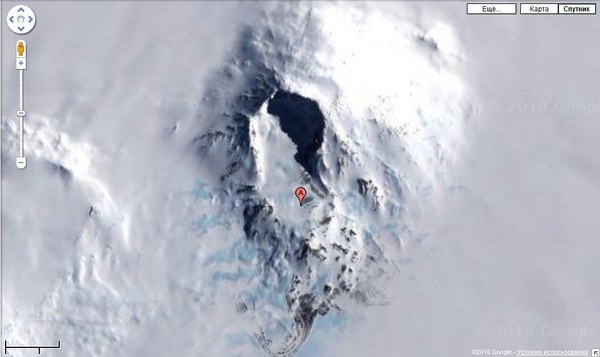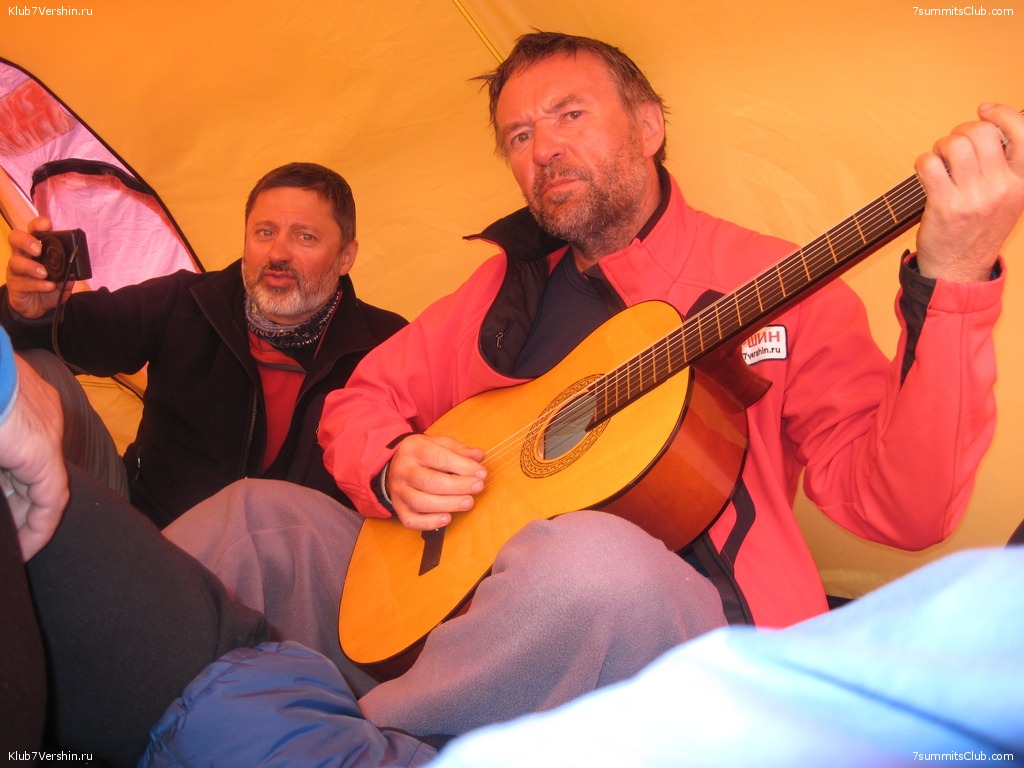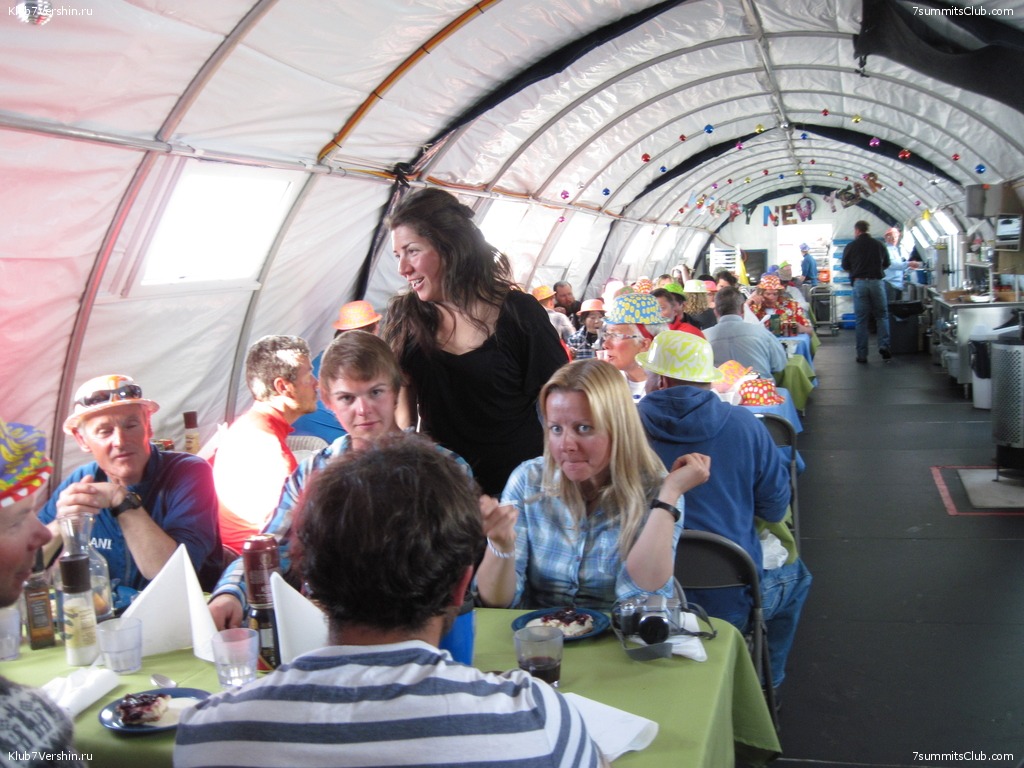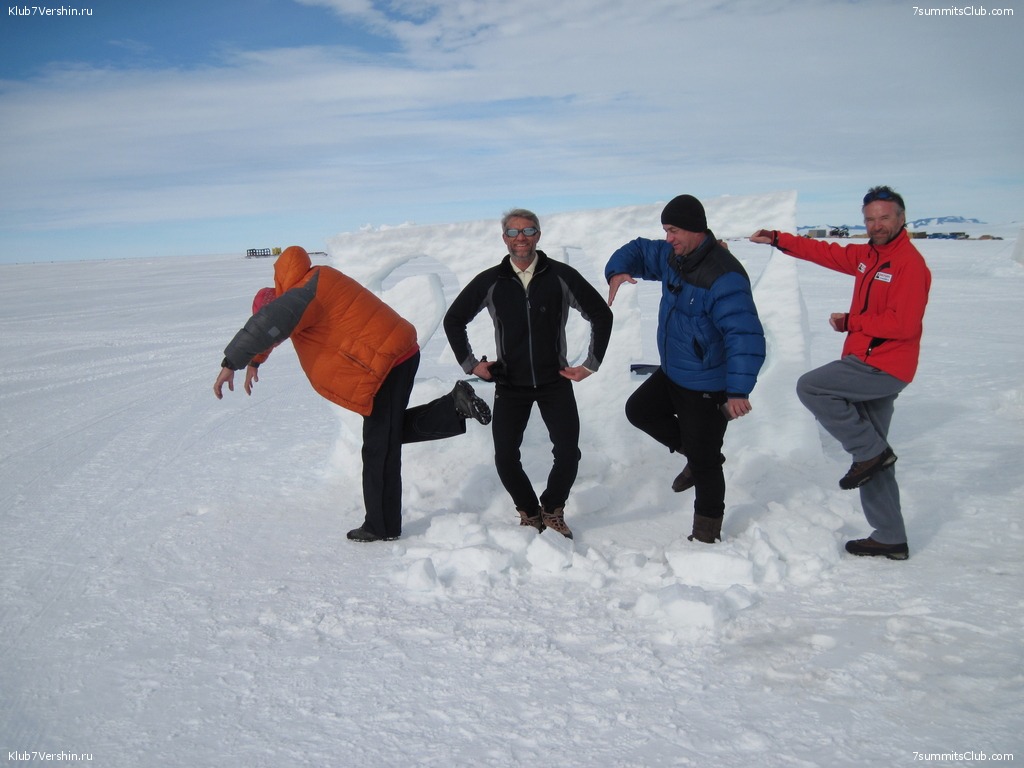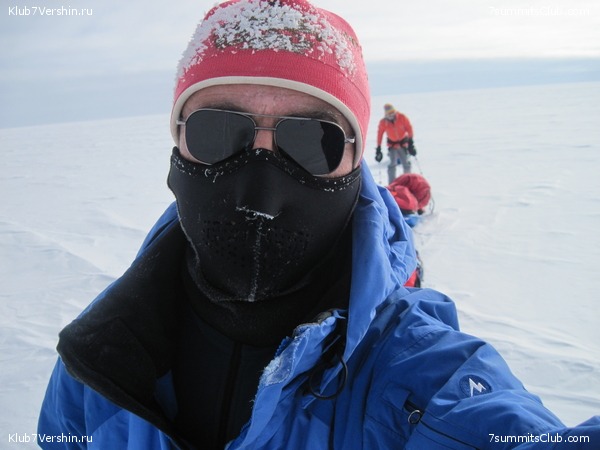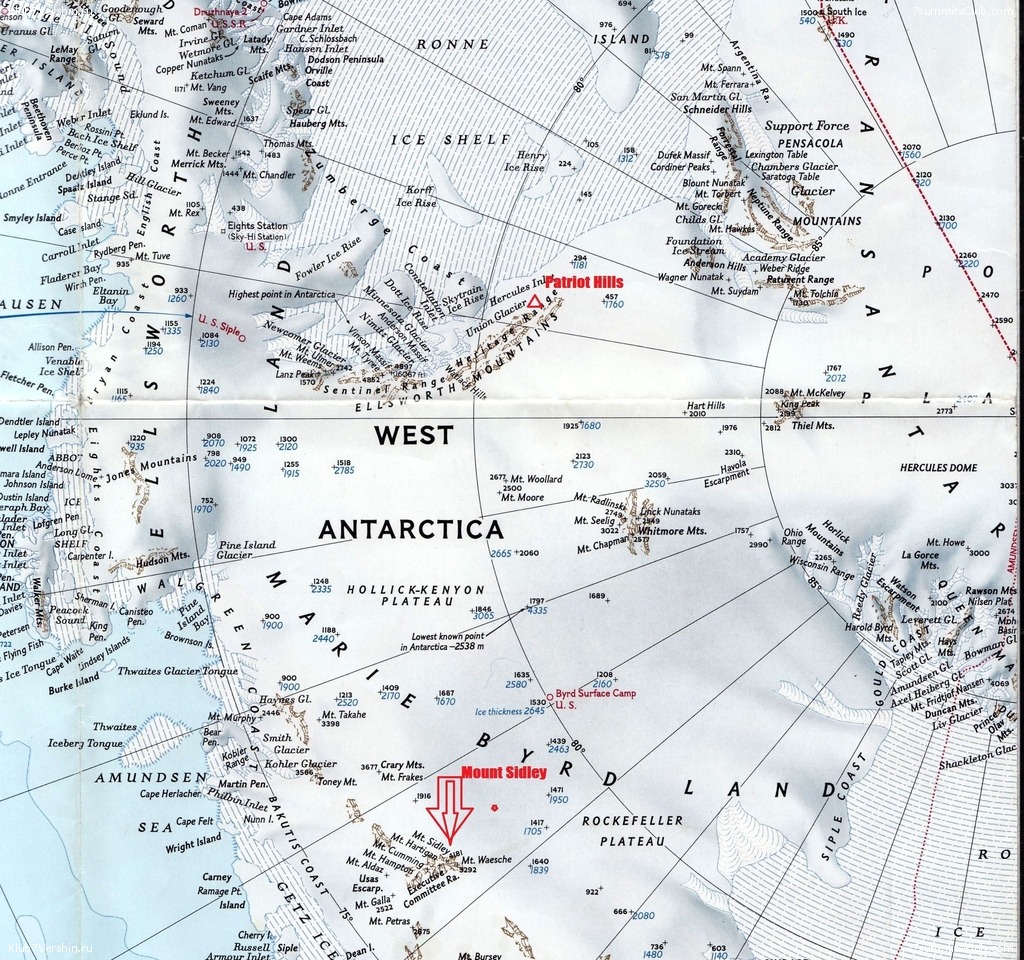All news: January 2013
Kaspersky Team 7 Volcanoes: SIDLEY CONQUERED!
Sidley.
Jan 28, 2013. Kaspersky Team.... Olga Rumyantseva has succeeded in her solo-climb of the highest volcano in Antarctica –Mount Sidley! Olga was lucky with the weather (though you could be forgiven for thinking otherwise from her ...
Jan 28, 2013. Kaspersky Team....
Olga Rumyantseva has succeeded in her solo-climb of the highest volcano in Antarctica –Mount Sidley! Olga was lucky with the weather (though you could be forgiven for thinking otherwise from her messages) and transport – so much so, that she is already back inMoscowfull of impressions and with some stunning photos.
We asked Olga about the surprises – both pleasant and unpleasant – the difficulties she faced and the feelings she had after making it to the summit.
Source: http://blog.kaspersky.com/category/special-project/
Congratulations! How was the climb?
The climb up Sidley lasted four days. The sky was overcast; it snowed and was very cold. The most serious problem was a lack of visibility, so any climbing was impossible. So as not to waste time I carried my tent up part of the way twice –1500 m the first time and 600 m the second time. It meant the last leg to the summit was just an 800m spurt. I was lucky with the higher camp: it was warm and there was no wind, which meant I could lie down and bask in the sun when it was shining on my tent.
On the summit of Mt.Sidley
The fourth day brought strong winds that blew away the clouds. But it was very cold, about -25, though with the wind-chill factor is felt more like -35. Everything froze, but the visibility was great, so I could admire the scenery. During my ascent I spotted some impressive snowy “mushrooms” as large as a house.
The climb was easy, though it was hard to call or take photos because of the cold. I wish I could have taken more – the scenery from above was something else! Actually, I didn’t expect it to be so beautiful there. It certainly brightened up my climb.
What was the most difficult part about climbing Sidley?
Dragging myself out of the tent on the day of the climb.
It was very cold, even forAntarctica. My hands were frozen. Everything froze the moment I stopped. But then the wind dropped and I felt much warmer, though my fingers almost got frostbite dialing a phone number on the peak.
Overall, the most difficult part was waiting…for the planes, for the weather…
How do you cope with extremely low temperatures?
I’m not very good at dealing with very low temperatures. The cold immediately gets into me and it can be disheartening. I’m not a fan of the cold!
What can you say about your first volcano a few days after the climb?
I am happy with the successful start to the project. The climb of the oldest, most mysterious and, I hope, coldest volcano of the project is under my belt. Next stop – Kilimanjaro!
Were there any difficulties on your journey back from the volcano?
Well, it wasn’t easy. Even getting to Union Glacier Camp was a problem! The weather changed dramatically, with strong winds blowing acrossAntarctica. It was a bumpy landing at Union Glacier. They’d never experienced such strong winds at the camp – I have never seen such sturdy tents before, and the planes were surrounded with other vehicles so they didn’t blow away. But Union Glacier is fairly close to civilization – there was only a flight to Punto Arenas left. Though, that could have been delayed too, as disaster struck: the Ilyushin, the only plane that flies toAntarcticafrom the mainland, broke down after we’d gone to Sidley. The engine had to be replaced. While we were out at Sidley they had been trying to fix it and had even flown out an engineer fromMoscow. While the plane was being fixed, lots of people from several expeditions were stuck at the camp! I thought I wouldn’t get a place on the first flight. Everything ended happily though – everyone was flown out on the same plane.
What are the first three things you do when you get back to civilization?
I have a wash – you can’t beat a hot shower after an expedition. I think everybody does that first. Then I catch up on my sleep – any bed is a luxury after long nights in a tent in the snow. I eat. As a rule, after a climb we go to a restaurant and order meat, salads, wine – everything we had to do without during the climb.
--------------------------------------------------------------------------------------------
THE KASPERSKY 7 VOLCANOES EXPEDITION
Jan 15, 2013
Kaspersky Team
Climbing the highest volcanoes on every continent alone, without any backup is definitely not for the faint-hearted! You’d have to be bold, spirited…and just a little bit crazy. But Olga Rumyantseva certainly isn’t daunted by the prospect. She has set off to conquerMt.Sidley, Kilimanjaro,Mt.Giluwe, Damavand, Elbrus, Pico de Orizaba andOjos del Salado. Now, we at Kaspersky Lab rate commitment and dedication very highly, and that’s why we’ve decided to help Olga in her undertaking.
Olga (38) has a successful career as a financial consultant behind her and is the mother of two daughters, but she hasn’t stopped there. Her hobby of mountaineering turned into her profession in 2008 when she became an instructor at the Seven Summits climbing club. We asked Olga about her passion for climbing and why the 7 Volcanoes project is so important for her.
Why did you decide to conquer the seven volcanoes?
You don’t conquer mountains; you climb them, or you don’t climb them . The number seven appeals to people. Seven notes, the seven colors of the rainbow…seven continents. The challenge of climbing the world’s seven highest summits on all the continents has long been popular. In recent years a new challenge – climbing the highest volcano on each of the seven continents – has also gained popularity. I like that it’s not just some random number of volcanoes but a whole project. Every new summit is a new discovery, a new journey. And it’s something anyone can do, unlike the Seven Summits.
Why those seven volcanoes in particular?
That’s the specific challenge – the highest volcanoes on each continent. Volcanoes really are fascinating. They’re alive.
Of those seven volcanoes, I’ve been to four as a guide: Elbrus, Pico de Orizaba, Kilimanjaro, andDamavand. While I was taking clients up those volcanoes I got the strong urge to return to them myself and climb them the way I wanted to, and am capable of doing, without having to worry about anyone else.
Why do it alone?
Alone is not exactly the right term. I would say without a team, without any backup.
Usually when people plan a mountaineering expedition there is a team where everyone has a role and they all start working together to achieve that goal. And although every person is important, within the framework of the expedition, he or she can easily be replaced. In other words, the group is more important than the individual.
I’m not a team player. I don’t like team sports. I need to know that the result is all down to me, that it depends on me and nobody else, that there’s no chance of sitting on the substitute’s bench.
Having said that, mountaineering is not really a sport. There is no competition as such. There’s no winner or loser. You need to set a target and reach it. It’s important to adhere to your own standards. Climb the way you want to climb. For me, climbing is a way of life, a philosophy…
Do these climbs enhance your experience in any way?
The 7 Volcanoes project envisages trips to various corners of the planet. This is not just about the physical side, but also new impressions, getting to know new people and their cultures. A lone traveler is more open to meeting new people.
I think, I’ll meet lots of new people and make some interesting acquaintances during training and the actual climbs. If I find kindred spirits among those new people, if I see them share my goals (all of these seven volcanoes are in fact popular climbing destinations), then it’s quite possible we may travel some of the way together.
At the same time, I will have everything I need for traveling on my own, so I can keep traveling independently from other people regardless of the circumstances.
How difficult will it be?
It depends. In general, it’s pretty tough: most of these volcanoes have altitudes over 5000 m. This is high-altitude mountaineering, and it requires serious physical training. Just like on any other big mountain, a climber can encounter harsh weather conditions on these volcanoes.
How do you train for that?
Just like for the other climbs: you need to train your body for intense physical activities in an environment where there’s insufficient oxygen in the air. Any physical exercises will do, be it long-distance running, swimming, etc. And most importantly is a strong desire to reach the summit. 50% of your success is down to your positive psychological state. I have that type of attitude: wait, endure and believe in your own strength.
Could anyone do it? Let’s say an office worker. Could he or she just go and climb a volcano?
Yes. But you can’t just get up and go. You need to find an experienced guide and then go. In order to climb, and, more importantly, descend afterwards, stay alive and in one piece, you need to know how to acclimatize yourself to extreme altitudes, how to plan your physical reserves, be able to orient yourself while on route, to know about the peculiarities of the weather in the mountains, the hazards of mountain, have basic mountaineering skills (such using crampons while walking on ice, etc.), and loads of other factors.
The only exception is Ojos del Salado, the highest volcano inSouth America. It’s nearly 7000m high. You must have experience in high-altitude mountaineering before going up to such an altitude. Of course, people can try it without the right experience, but they most likely won’t make it and cause irreparable damage to their bodies.
As for the other volcanoes, they are quite appropriate for newbie mountaineers. Just one example: last year, Sergey Pikkat-Ordynskiy from Kaspersky Lab, climbedOrizaba, the highest volcano inNorth America, without any prior mountaineering experience – that guy had never been in the mountains before and wanted to find out what mountains are and how to climb them.
Is there any special psychological or physical training? For example, how many kilometers should you be able to run or how many chin-ups should you be able to do to go on an expedition like this?
You really need to want to do it. You must be able to endure cold, hunger, physical exertion, pain. The acclimatization process is often not easy for people going to the mountains for the first time and can cause severe headaches, loss of appetite, weakness. You must be able to overcome this, to pull yourself together and keep going on in spite of it all.
There are no exact figures. You just have to be in good physical shape. But … it depends on the result you’re aiming for. If you just want to climb with a guide, visiting the gym from time to time is enough. If you want to climb and enjoy it, you have to exercise regularly – go running and swimming two or three times a week.
As for me, in periods of regular training I go running two or three times a week (8-15 km, or if I have time and I’m in the mood, I can even run 20 km) and swim 1-1.5 km two or three times a week as well.
Doing chin-ups is not necessary. It may be necessary to train for technical ascents when the mountaineers climb a wall. You get up these volcanos on foot. There are only small parts of the route where you have to climb. I can do chin-ups . I can do about three, but used to be able to do 15.
Mountains are fascinating, but they are not meant for human life. Therefore, you have to be able to survive there. And enjoy it.
Why do you think Kaspersky Lab decided to support you? In what ways are you similar?
I think our most important similarity is the ability to set goals and achieve them expanding the limits of your capabilities, even if it’s not that easy. There’s also self-sufficiency and an openness to everything new and exciting – new people, new ideas.
P.S. The Kaspersky 7 Volcanoes Expedition is not Kaspersky Lab’s first experience in collaboration with the world’s highly recognized explorers. In 2009 the company sponsored a group of women who skied more than 900 km from the coast ofAntarcticato the South Pole. In 2012 with the support of Kaspersky Lab, British explorer Felicity Aston became the first woman in history to ski cross Antarctica alone, having set a new world record.
Kosta-Rica and Panama on New Year
Guides of the 7Summits-Club Marina Nemirova and Alexay Kabanov visited Kosta-Rica and Panama during the New Year vacancy. They made a wonderful trip and share with us their photo collection... ...
Guides of the 7Summits-Club Marina Nemirova and Alexay Kabanov visited Kosta-Rica and Panama during the New Year vacancy. They made a wonderful trip and share with us their photo collection...
Record tumbles in climb to the top of Aconcagua
Aconcagua.
Carlos Sa marathon runner and climber has entered the record books after his conquest of the highest peak in the Americas. The Portuguese knocked nearly five hours off the record for the ascent of Aconcagua cutting the time from 20 hours to ...
Carlos Sa marathon runner and climber has entered the record books after his conquest of the highest peak in the Americas.
The Portuguese knocked nearly five hours off the record for the ascent of Aconcagua cutting the time from 20 hours to 15 hours and 42 minutes.
The mountain, in the Andes range inArgentinarises to almost 7,000 meters and this was Sa’s second attempt at the record.
Technically in mountaineering terms it is known as an easy climb, but it has what is called, “a hidden evil” the intense cold which has caused many injures to climbers in the past and Sa also had to cope with deep snow hampering his progress to the top and that record.
From 7Summits-Club
Carlos Sa or Carlos Gomes Dasa - 39 years old ultra sky-runner of world class, one of the first on all ratings.
That record toAconcaguawas carefully prepared. Carlos Sa with his team arrived to Argentina in December. On December 27 there was his first climb of Aconcagua for acclimatization and route studying. The first attempt of establishment of a new record took place on January 13. However in the upper part of a route conditions were unfavorable - snow swept up the track. The second attempt took place in three days. On January 16 Carlos started at 5:20 a.m. from an entrance to the national park Horcones, from height of 2750 meters. His start was noted by employees of the park who and fixed then his finish. At the top of Aconcagua (6962 meters, on the last measurement) the Portuguese was approximately at 5 p.m.. . And at 8:34 p.m. Sa returned to Horcones. Total time, that is a new record – 15 hours 42 minutes. Distance – about 81 kilometers, vertical drop – about 4500 meters.
Time of the Portuguese runner is confirmed as record by official representatives of National park. Also it was reported that Karlush Sa broke a record of the Peruvian Holmes Pantoja Bayona (20:35).
It, probably, means so that the time shown in 2007 by Spaniard Jorge Egochiarega - 14 hours, 5 minutes and 54 seconds – are recognized informal, or more precisely, as the officially unrecognized.
In 2000 Pelissier, Brunod and Meraldi - Italian team (all stars of ski-mountaineering) climbed on top of Aconcagua from Plaza de Mulas in 3 hours 40 minutes (1:12 – for descent). Still this result is considered as a record.
Well-known Catalan Kilian Jornet (at the left, Carlos at the right ) intends to establish new speed records at all Seven Summits.Aconcaguais planed for 2014. What route he will choose ?
WINGS OF KILIMANJARO: start at Sunday
Kilimanjaro.
On January 27th 2013, adventurers from all over the globe will assemble at the foot of Mt Kilimanjaro in Tanzania. The team, the largest ever group to attempt the world’s tallest free standing mountain, aim to ascend the 19,340 foot ...
On January 27th 2013, adventurers from all over the globe will assemble at the foot of Mt Kilimanjaro in Tanzania. The team, the largest ever group to attempt the world’s tallest free standing mountain, aim to ascend the 19,340 foot high and fly from the summit. The climb and paraglide mission, something that is usually banned by the Tanzanian Government, will raise over US$1 million for 3 charities making a difference on the ground in Eastern Africa; Plant With Purpose, WorldServe International and One Difference.
The expedition was made possible by a small but passionate team from Australia who have worked for over 2 years to plan and convince the Tanzanian Government to temporarily lift the ban on paragliding from Kilimanjaro for this once in a lifetime event.
200 ADVENTURE PHILANTHROPISTS TO FLY FROM THE ROOF OF AFRICA TO HELP THOSE IN NEED ON THE GROUND
On January 27th 2013, adventurers from all over the globe will assemble at the foot of Mt Kilimanjaro in Tanzania. The team, the largest ever group to attempt the world’s tallest free standing mountain, aim to ascend the 19,340 foot high and fly from the summit. The climb and paraglide mission, something that is usually banned by the Tanzanian Government, will raise over US$1 million for 3 charities making a difference on the ground in Eastern Africa; Plant With Purpose, WorldServe International and One Difference.
The expedition was made possible by a small but passionate team fromAustraliawho have worked for over 2 years to plan and convince the Tanzanian Government to temporarily lift the ban on paragliding from Kilimanjaro for this once in a lifetime event.
Adrian and Paula McRae
THE EXPEDITION
A team of more than 1,000 porters, guides, and crew will support the 100+ adventurers. The group will spend seven days making the trek to the 19,340-foot peak where the pilots will launch. This is slightly longer than most groups take to summit Kilimanjaro, in order to optimize the pilots’ acclimatization and minimize the risk of hypoxia and Acute Mountain Sickness.
Even with the extended time for acclimatization, not all pilots will summit. Sub-freezing temperatures, nausea, headache, dizziness, and fatigue are common effects of high altitude that could impede the proper mental or physical state required to safely launch a paraglider. Only the strongest will succeed.
THE PILOTS
For each pilot, the mission is very personal, and for many the fulfillment of a lifelong dream. Participants commit to raising a minimum of $5,000 USD towards the charity fund, and have to pass a rigorous application process. Over 300 pilots have registered their interest from over 60 countries from as far afield asRussia toNepal fromSingapore toPeru. So far, over 100 pilots have been accepted as Official Wings of Kilimanjaro Pilots as a result of our strict screening process, focusing on experience to ensure the highest level of safety for all involved.
This remarkable record-breaking event will be communicated to the world via international sport, lifestyle and news media coverage; alongside global distribution of content via online, cable and network platforms, including popular video distribution and social media sites (Youtube, Facebook, Twitter, etc). A feature film will also be made, following the stories of select pilots and team members.
Paragliding participants currently include several newsworthy individuals from the world of adventure sport, adventure traveling and philanthropy.
http://wingsofkilimanjaro.com/index.php/home/
Program 7 volcanoes. Vyacheslav Adrov - a new recordsman ofRussia!
Sidley.
7 Summits Club joins numerous congratulations to Vyacheslav Adrov, who after climb of Mount Sidleycompleted the program "Seven Volcanoes." That is, he climbed up seven highest volcanoes in the seven continents (according the current ...
7 Summits Club joins numerous congratulations to Vyacheslav Adrov, who after climb of Mount Sidleycompleted the program "Seven Volcanoes." That is, he climbed up seven highest volcanoes in the seven continents (according the current version). The first inRussia, the first in the CIS, the first inMoscowand our Club. But Vyacheslav have another project. He wants to find a new highest volcano inEurasia, and plans to do in the nearest future. We wish him luck! New high and new achievements!
Heroes of the epic climb of the highest volcano in Antarctica have already left the icy continent and landed inPunta Arenas(Chile). We are waiting for them inMoscow.
Fresh pictures from Sidley:
Adrov in Papua
Paul Nicholson wrote :
.. Slava is only the third person in the world (!) to complete all 7 of the Volcanic Seven Summits - and he is also the first Russian to do it! And he has also done the two poles too! VERY IMPRESSIVE and worthy of recognition ...
Slava is a humble and very classy man, he would never ask me to write this email to you. Instead, I am writing it exactly because Slava is such a good guy :-), and because his achievement deserves recognition!
Alexander Abramov, bathed in the Epiphany frosts
Alexander Abramov has recently returned fromAntarctica. So snow and ice was not scared him. And then there, and God himself commanded. An old Russian tradition. After Antarctica craving for cold Epiphany on a fine frosty day. ...
Alexander Abramov has recently returned fromAntarctica. So snow and ice was not scared him. And then there, and God himself commanded.
An old Russian tradition.
After Antarctica craving for cold Epiphany on a fine frosty day.
Alex Abramov and his son Maxim after bathing.
Polar Explorer Attempting January Denali Summit Again
McKinley.
There are two things you can say with certainty about polar explorer Lonnie Dupre. The man is certainly persistent in his pursuits and he has an undeniable affinity for the cold places of our planet. For the third straight year, Dupre has ...
There are two things you can say with certainty about polar explorer Lonnie Dupre. The man is certainly persistent in his pursuits and he has an undeniable affinity for the cold places of our planet. For the third straight year, Dupre has ventured to Denali (also known asMt.McKinley) inAlaskato attempt a solo summit of the mountain in January – the coldest, darkest and harshest time of year on that unforgiving peak.
With a height of 20,320 feet, Denali is the tallest mountain inNorth Americaand a difficult climb under the best of conditions. Only 16 climbers have ever managed to reach its summit during the winter and none were able to accomplish that feat in January when temperatures routinely fall below -60°F and high winds pummel the mountain's upper slopes. As if those conditions weren't difficult enough, blizzards can rage for days, depositing heavy snow across the mountain and creating potentially deadly avalanches as well. In short, it is pretty much one of the most inhospitable places on the planet at the moment.
Dupre, who has visited the North Pole on two separate occasions and navigated the length of theNorthwest Passageby dogsled, is clearly unphased by these challenges. As in years past, he is climbing with just the bare essential gear and supplies in an attempt to move as fast as possible. He hasn't even bothered to bring a tent on the expedition choosing instead to dig a series of snow caves that he can use for shelter at various altitudes.
Thus far the weather has been less than cooperative once again this season and Dupre spent the better part of the month waiting in the small town ofTalkeetnafor the skies to clear. Eventually conditions improved just enough for him to catch a flight out to the Kahiltna Glacier. From there, he was able to organize his gear and start the two-day trek to Base Camp, but so far he hasn't been able to climb any higher than 8800 feet. A heavy storm has fallen across the region and according to Dupre's support team at home, more than 7 feet of snow has fallen on his position in the past few days. That has made it impossible for him to climb any higher, as visibility as been reduced to almost nothing.
For now, our intrepid climber sits and waits for conditions to improve to see if he can actually make a serious attempt at the summit. In 2011 he was able to get as high as 17,200 feet and last year he reached 15,400 feet before being forced to turn back. Perhaps this time he is getting the bad weather out of the way early and it will clear up later in the month. Temperatures haven't been nearly as bad as they were on his previous attempts either, so that is a promising sign for possible success should the snow ever stop falling.
Dupre is documenting his climb with the hopes of making a film about his adventure. But rather than wait for that film to be released down the line, you can follow his progress
by Kraig Becker
Vladimir Putin: Opening of Russian Geographical Society headquarters in Moscow
Elbrus.
Vladimir Putin participated in the opening ceremony of the Russian Geographical Society headquarters in Moscow. The President toured the library and lecture-hall, and visited the multi-purpose media studio, which connects the headquarters ...
Vladimir Putin participated in the opening ceremony of the Russian Geographical Society headquarters in Moscow.
The President toured the library and lecture-hall, and visited the multi-purpose media studio, which connects the headquarters via videoconference with all of the Society’s offices throughout the nation.
The ceremony was also attended by the Russian Geographical Society president and Defence Minister Sergei Shoigu, Moscow Mayor Sergei Sobyanin, and members of the Society’s Board of Trustees, which is chaired by Vladimir Putin.
The Russian Geographical Society was founded by the Russian Emperor Nicholas I in 1845. Since its creation, its goal has been to collect and disseminate geographical data onRussia. With historic headquarters inSt Petersburg, the Society has offices operating in 81 Russian regions.
Source: eng.kremlin.ru
Rarely is to be found in one place such a high-level company. Surprising. Red.
* * *
PRESIDENT OFRUSSIA VLADIMIR PUTIN:
Friends, I congratulate you all on the opening of the Russian Geographical Society headquarters inMoscow. This is a pleasing and important event for everyone who loves our country, who is interested in its history and its culture, who cares about and values the traditions of our peoples.
I would like to particularly thank the Mayor of Moscow as it wasMoscowcity hall who provided this building, allocated funding for its renovation and organised the repairs. I also want to thank members of the Board of Trustees for helping to bring together everything that we have on these premises today.
I must also note that we have Russian Geographical Society offices open in 81 of theRussian Federation’s regions. But unfortunately, not all of these offices have their own buildings, even though that is very important and would not be difficult to achieve. Russian Geographical Society offices would certainly fill a very significant niche for those people who, as I said earlier, are truly and actively interested in the history, ethnography and traditions of our peoples.
These offices could serve as gathering places for scientists, public figures and, first and foremost, young people who want to devote part of their lives – or their entire lives – to their nation. Without the knowledge that is provided by the Russian Geographical Society, it would be actually impossible to do this properly and enjoyably.
The Russian Geographical Society has always had a tradition which was maintained even when the Society nearly ceased its existence, but its premises still remained inSt Petersburg, the tradition of accumulating and effectively using various items. These are not just materials pertaining to scientific research, although that, too, is very important; they also include libraries, which have already been mentioned and which are starting to be replenished or created anew.
I am asking all the members of the Board of Trustees to aid in replenishing these pools, and some of our colleagues are already actively participating in their replenishment. I promise that for my part, I will do the same, and I hope that the stocks will be much in demand.
We certainly should apply a modern approach; we should transfer all the holdings to a digital format and establish effective partnerships with archiving institutions, regional museums and other regional centres in order to set up a modern, highly accessible method for allowing these materials to be used by everyone who would like to use them.
I sincerely congratulate all of us on this event; I wish the new home of the Russian Geographical Society success and very much count on both the people present today and everyone who loves our country to get involved in the Society’s work. Of course, this will largely depend on the media. In this respect, I would like to thank Mr Dobrodeyev [CEO of the National State Television and Radio Company (VGTRK)]. You have come up with a brilliant TV programme, and the team consists of very interesting people who are enthusiastic about their work. The TV programme really is designed for millions of our people and, in my view, has a very good approach to presenting interesting facts and information that are of significance for our society.
Once again, I congratulate all of you. Thank you very much.
Mount Sidley: summit for whole team !!!
Sidley.
According information from a member of our Club Vitaly Simanovich, the whole team reached the summit of Mount Sidley. The weather was perfect, a temp of ascent was very slow, because all climbers were waiting for Paul. Vitaly and ...
According information from a member of our Club Vitaly Simanovich, the whole team reached the summit of Mount Sidley. The weather was perfect, a temp of ascent was very slow, because all climbers were waiting for Paul. Vitaly and friends are amazing by the beauty of unreal scenery of Mount Sidley.
Congratulations !!!!
Photos from 2011
Mount Sidley: the expedition set up a camp at 3400
Sidley.
According an information from a member of 7 Summits Club Vitaly Simanovich, 16th of January the expedition set up a camp at altitude 3400 meters. From here they will try to climb Mount Sidley. Our members Vitaly and Viacheslav Adrov, as ...
According an information from a member of 7 Summits Club Vitaly Simanovich, 16th of January the expedition set up a camp at altitude 3400 meters. From here they will try to climb Mount Sidley. Our members Vitaly and Viacheslav Adrov, as Olga Rumiantseva (Kaspersky 7 Volcanoes Expedition), are in good conditions and were ready to go in alpine style. But the group climbs in one team, and Paul Nicholson from Canada feels worse and go slowly with a guide David Hamilton.
Photos from the 2011 expedition
Kaspersky Lab Announces the Start of the Kaspersky 7 Volcanoes Expedition
Sidley.
PRNewswire Kaspersky Lab sponsors new project to conquer 7 volcanoes on 7 continents. Kaspersky Lab, a leading developer of secure content and threat management solutions, announces the start of an adventurous new project: the Kaspersky 7 ...
Kaspersky Lab sponsors new project to conquer 7 volcanoes on 7 continents.
Kaspersky Lab, a leading developer of secure content and threat management solutions, announces the start of an adventurous new project: the Kaspersky 7 Volcanoes Expedition. Renowned mountaineer Olga Rumyantseva will become the first woman to solo-ascend the Volcanic Seven Summits, the seven highest volcanoes across the continents, within one year.
Supported by Kaspersky Lab, Olga will solo-climb Mt. Sidley (Antarctica), Kilimanjaro (Tanzania), Mt. Giluwe (Papua New Guinea), Damavand (Iran), Elbrus (Russia), Pico de Orizaba (Mexico) and Ojos del Salado (Chile/Argentina). Summiting these volcanoes is considered one of the toughest mountaineering challenges in the world, and the fact that Olga will be the first in history to ascend them alone in less than 12 months merely adds to the challenge.
Although Olga is going to set a record, the expedition is more about testing the spirit and personal achievement. Olga commented: "This has been my dream for a long time. I'm an adventurer; I like to explore and do things that have never been done before. The difficulty of this challenge makes it even more interesting for me! I'm so grateful Kaspersky Lab has helped me turn this plan into reality, and given me the chance to fulfill my dream."
Kaspersky Lab CEO and co-founder Eugene Kaspersky said: "In our company, the notion of personal achievement, of the will to win is one of the most important. We believe one person can do a lot if he or she is truly committed to the goal and to the dream. People like Olga are real winners. She is capable of following her dream and moving forward no matter what obstacles are in her way. That's what unites us with Olga and I believe that her achievements will inspire our whole team around the world! We'll be following her progress closely throughout 2013."
The Kaspersky 7 Volcanoes Expedition started on 11 January 2013 with the ascent of the highest volcano in Antarctica: Mount Sidley with a summit elevation of 4,181-4,285 meters (13,717-14,058 ft.). It is a massive, mainly snow-covered shield volcano which is the highest and most imposing of the five volcanic mountains that comprise the Executive Committee Range of Marie Byrd Land .
The Kaspersky 7 Volcanoes Expedition is a new step for the brand in collaborating with the world's highly recognised explorers. At the beginning of 2012, with the support of Kaspersky Lab, British explorer Felicity Aston became the first woman in history to cross Antarctica alone, having set a new world record. Another expedition dating back to November 2009 saw the company sponsor the Kaspersky Commonwealth Antarctic Expedition. This project brought together women from Brunei, Cyprus, Ghana, India, Jamaica, New Zealand, Singapore and the United Kingdom who skied more than 900 km from the coast of Antarctica to the South Pole to mark the 60th anniversary of the Commonwealth.
About Olga Rumyantseva
Olga Rumyantseva was born in the city of Tver, Russia. From an early age she had a keen interest in mountain trekking and mountaineering. What started out as a hobby scaling peaks in the Caucasus, the Khibiny Mountains and mountains in Central Asia later turned into a lifestyle. She received a first grade in mountaineering and became director of the Moscow State University alpinism club. In 2008 Olga started her dream job when she became a mountaineering guide. Throughout her climbing career she has ascended numerous mountains on every continent.
Kaspersky Lab Newsroom
Kaspersky Lab has launched a new online newsroom, Kaspersky Lab Newsroom Europe (http://newsroom.kaspersky.eu/en), for journalists throughout Europe. The newsroom is specifically designed to serve many of the media's most common requests, making it easier for journalists to find product and corporate information, facts and figures, editorial copy, images, videos and audio files, as well as details about the appropriate PR contacts.
About Kaspersky Lab
Kaspersky Lab is the world's largest privately held vendor of endpoint protection solutions. The company is ranked among the world's top four vendors of security solutions for endpoint users*. Throughout its 15-year history Kaspersky Lab has remained an innovator in IT security and provides effective digital security solutions for consumers, SMBs and Enterprises. The company currently operates in almost 200 countries across the globe, providing protection for over 300 million users worldwide. Learn more at http://www.kaspersky.co.uk. For the latest on antivirus, anti-spyware, anti-spam and other IT security issues and trends, visit: http://www.securelist.com/.
*The company was rated fourth in the IDC rating Worldwide Endpoint Security Revenue by Vendor, 2010. The rating was published in the IDC report Worldwide IT Security Products 2011-2015 Forecast and 2010 Vendor Shares - December 2011. The report ranked software vendors according to earnings from sales of endpoint security solutions in 2010.
© 2013 Kaspersky Lab. The information contained herein is subject to change without notice. The only warranties for Kaspersky Lab products and services are set forth in the express warranty statements accompanying such products and services. Nothing herein should be construed as constituting an additional warranty. Kaspersky Lab shall not be liable for technical or editorial errors or omissions contained herein.
Follow us on Twitter
http://www.twitter.com/kasperskyuk
Like us on Facebook
http://www.facebook.com/Kaspersky
PR Newswire (http://s.tt/1yjiK)
Vyacheslav Adrov: News fromt Moun Sidley expedition
Sidley.
Vyacheslav Adrov: Hi Club! News from Sidley. Our ascent with 1400 meters vertical drop, turns into an expedition. Tomorrow we are going to put an intermediate camp at 3500 meters. The main problem - a state of health of Paul. He still can ...
Vyacheslav Adrov: Hi Club! News from Sidley. Our ascent with 1400 meters vertical drop, turns into an expedition. Tomorrow we are going to put an intermediate camp at 3500 meters. The main problem - a state of health of Paul. He still can not walk and is in a tent.
Photos from 2011 expedition
Aconcagua – summit !!!
Aconcagua.
Seven Summits, hello! Dima Ermakov and Denis Saveliev send a message from the Cholera camp… Yesterday we were almost by whole team up at the summit, the highest point in the two Americas - Aconcagua. Only Semion Deyak could not reach ...
Seven Summits, hello! Dima Ermakov and Denis Saveliev send a message from the Cholera camp… Yesterday we were almost by whole team up at the summit, the highest point in the two Americas - Aconcagua. Only Semion Deyak could not reach the summit, a bit about 50 meters by altitude. Local rangers stopped everyone in their view who was climbing late. Well, nothing. We all have a good mood. Today we went down. Best regards!
News from Mount Sidley expedition, Antarctica
Sidley.
Operation for the delivery of a climbing group to the base of volcano Sidley ended successfully. Two of the aircraft were involved in the action. DC-10 was used in order to deliver fuel for refuel. The group flew on a Twin Otter. The plane ...
Operation for the delivery of a climbing group to the base of volcano Sidley ended successfully. Two of the aircraft were involved in the action. DC-10 was used in order to deliver fuel for refuel. The group flew on a Twin Otter. The plane landed almost in the crater of Sidley. The base camp is set at an altitude of 2870 meters. Vyacheslav Adrov reports: “Camp was set, we had a dinner, now we are preparing for overnight . .... Weather is gorgeous, warm, no breeze. Another two days the weather will be like this. " However, not everyone feels good at that height. Therefore, plans of whole expedition are not fixed yet.
Members of the Sidley expedition: Vyacheslav Adrov, Vitaly Simonovich, Olga Rumyantseva (all - Russia), Paul Nicholson (Canada) and the guide of ALE David Hamilton.
Photos from the expedition of 2011
New Year: Seven Summits Club starts with a record number of teams
Everest BC (Nepal).
Let's count. (1) Alexander Abramov with four comrades goes by ski to the South Pole - the program "Last Degree". (2) According to the plan 10th of January, Vyacheslav Adrov and Vitali Simonovich start for the program climbing the ...
Let's count.
(1) Alexander Abramov with four comrades goes by ski to the South Pole - the program "Last Degree".
(2) According to the plan 10th of January, Vyacheslav Adrov and Vitali Simonovich start for the program climbing the highest volcano in Antarctica Mount Sidley.
(3) Large group (12 people) began its long journey to the summit of Aconcagua. Guides our Club: Dmitry Ermakov and Denis Saveliev.
(4) Another large group (10 people, guide Artem Rostovtsev) began the program Climb of Kilimanjaro. They will also visit a safari and Zanzibar.
(5) Another large group (12 people + 1 guide) started with a program of the climb of Kilimanjaro one day earlier, on January 2. This is - a joint project of the Donetsk Vertical-Tour and 7 Summits Club. Most of the participants are from teh city Donetsk, as well as guide Vyacheslav Vyblov.
Just a few small groups of Kilimanjaro travel by programs of basic services:
(6) - January 2, Machame route
(7) - January 3, Marangu route
(8) - from January 7 to Machame Route with Safari and Zanzibar.
For individual applications travel the following members of our Club.
(9) Jamil Manizada met the New Year at the top of the highest mount in Australia (island and contitnent)Mount Kosciuszko
(10) Mary Dyachenko celebrated the New Year in Mexico, climbing Orizaba.
(11) We have a group in Indonesia, on the islands and volcanoes.
(12) Tomorrow, January 6, the Group of 7 Summits Club arrives for trekking to Everest Base Camp.
(13) On January 3th a group of our Club came in Morocco. The program includes: -climbing the highest peak in North Africa -MountToubkal and excursions to historical places.
(14) Finally, three days later, on January 9th, another group of 7 Summits Club will start to Chile. Program: Climbing the highest volcano of the World Ojos del Salado, and after that make Patagonia cruises and tour wineries in Chile.
Total - 14 teams for the New Year and the first half of January. Our personal best record.
Our group went to Aconcagua for the summit attempt
Aconcagua.
Dmitry Ermakov and Denis Saveliev sent an information from the slopes of Aconcagua. Today, a group starts from the camp Nido de Condores to the area of the camp Cholera. The weather is good, everything goes fine. Tomorrow is set to be the ...
Dmitry Ermakov and Denis Saveliev sent an information from the slopes of Aconcagua. Today, a group starts from the camp Nido de Condores to the area of the camp Cholera. The weather is good, everything goes fine. Tomorrow is set to be the decisive day of the expedition. The group will go to storm Aconcagua.
Photos of Alex Abramov from Antarctica
South Pole.
First photos from Alex Abramov
Expedition to Mount Sidley: departure delayed
Sidley.
Members of the expedition to Mount Sidley are in base camp Union Glacier. The weather does not allow to fly on the route. January 16 - this is the earliest possible date for start. Vyacheslav Adrov and Vitalmy Simonovich are waiting for ...
Members of the expedition to Mount Sidley are in base camp Union Glacier. The weather does not allow to fly on the route. January 16 - this is the earliest possible date for start. Vyacheslav Adrov and Vitalmy Simonovich are waiting for good news from ALE and send greetings to all.
Helicopter Rescue in Bezengi (video) and tragic cases in the Caucasus ...
Elbrus.
Prolonged period of bad weather was in the mountains of Caucasus. This was accompanied by heavy snowfalls. Clearly, this has created a critical situation for mountaineering groups. The first case occurred on Kazbek. A group of four climbers ...
Prolonged period of bad weather was in the mountains of Caucasus. This was accompanied by heavy snowfalls. Clearly, this has created a critical situation for mountaineering groups. The first case occurred on Kazbek. A group of four climbers from the city of Volgodonsk climbed to climb Kazbek to plateau at about 4,500 meters, and there they were waiting for the weather. Continued bad weather forced them to abandon the assault of Kazbek. Snow was very high. On the descent group was crashed by an avalanche. Only one of them was left on the surface. He called the emergency services. His companions were found only in 2 days. Three people were killed.
On Elbrus a group of climbers spent a night in a storm on a small rescue shelter in the saddle. On the descent, one climber Artem Ivanov was broken by strong wind in the beginning of traverse. He fall for about 500 meters. All attempts to approach him failed. The weather is very bad, rescuers could not get through the storm to the victim. Rather, he is already dead.
Elbrus in Winter
In the reigon of Bezengi two very strong groups chose to climb a very serious climbing routes on the North Face of Krumkol. One led by Valery Shamalo, another – by Victor Koval. They made two very strong climb. However, in the vicinity of the top a storm came. It fall so much snow that a descent became too dangerous. The situation was critical. Food ran out, some of the climbers had frostbitten.
Famous team from the Heliaction company came to the rescue. Private helicopter flew from to Bezengi. The weather improved and the climbers were rescued.
Watch the video


